The Enduro has been in Specialized’s line-up for over 20 years and has evolved drastically in that time. This latest model is designed with one thing in mind: going fast.
The Comp model pictured here is the cheapest Enduro that Specialized offers. I put it through its paces to see just how well it compares to not just the S-Works Enduro model I tested late last year, but its similarly priced counterparts.
Bike of the Year 2020
The Specialized Enduro Comp is part of our annual Bike of the Year test.
Head to our Bike of the Year hub for the full list of winners, categories and shortlisted bikes, as well as the latest reviews – or read our behind-the-scenes feature on how we tested Bike of the Year 2020.
Enduro Comp frame and suspension details
Specialized doesn’t offer the Enduro frame in aluminium and, apparently, doesn’t intend to either. The Comp version uses the same frame as the Expert and Elite models, while the S-Works version gets carbon rocker links – the others use slightly more cost-effective aluminium numbers instead.
Both front and rear triangles are made from Specialized’s 11m FACT carbon. Within the chunky down tube sits the SWAT (Storage, Water, Air, Tools) door that’ll let you access the rather handy storage compartment where you can stash essentials such as a tube and C02 inflator (or a half-burrito, which gets forgotten about then starts to stink, as I once, accidentally, did…)
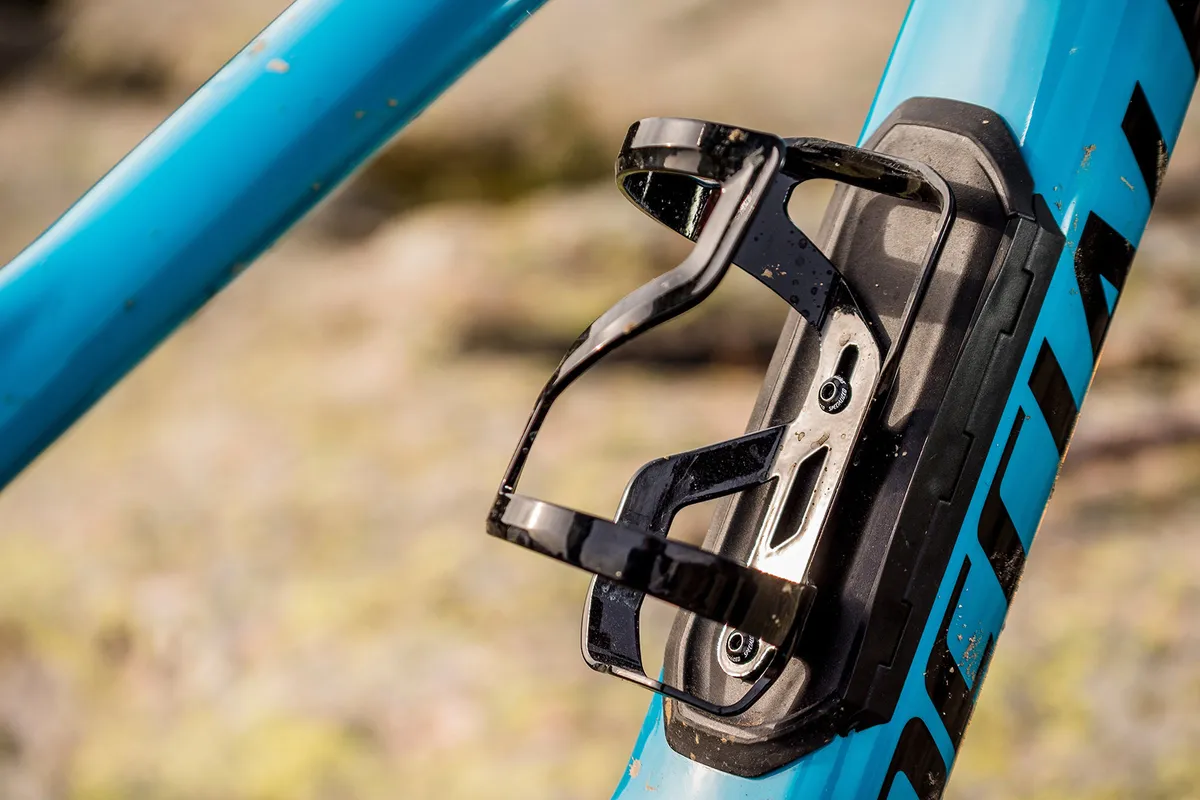
Compared to its predecessor, the Enduro’s shape has drastically changed, with the shock and accompanying links now nestled much lower in the frame. That means all the weight that is there is at least down by your feet.
Even though it looks very different, the Enduro continues to use a Horst Link design to pump out its 170mm of rear wheel travel.
Specialized claims to have upped the anti-squat by 40 per cent to boost its pedalling prowess, while the leverage curve becomes more progressive to ensure it’ll support the rider and handle big hits when it needs to.
A slightly more rearward axle path has also been configured in a bid to make the Enduro handle big, repeated hits without robbing the bike and rider of hard fought-for momentum.
As the rear shock is now exposed to rear wheel roost, Specialized has added a small plastic guard that sits between the lower links to protect it. It does a decent job too.
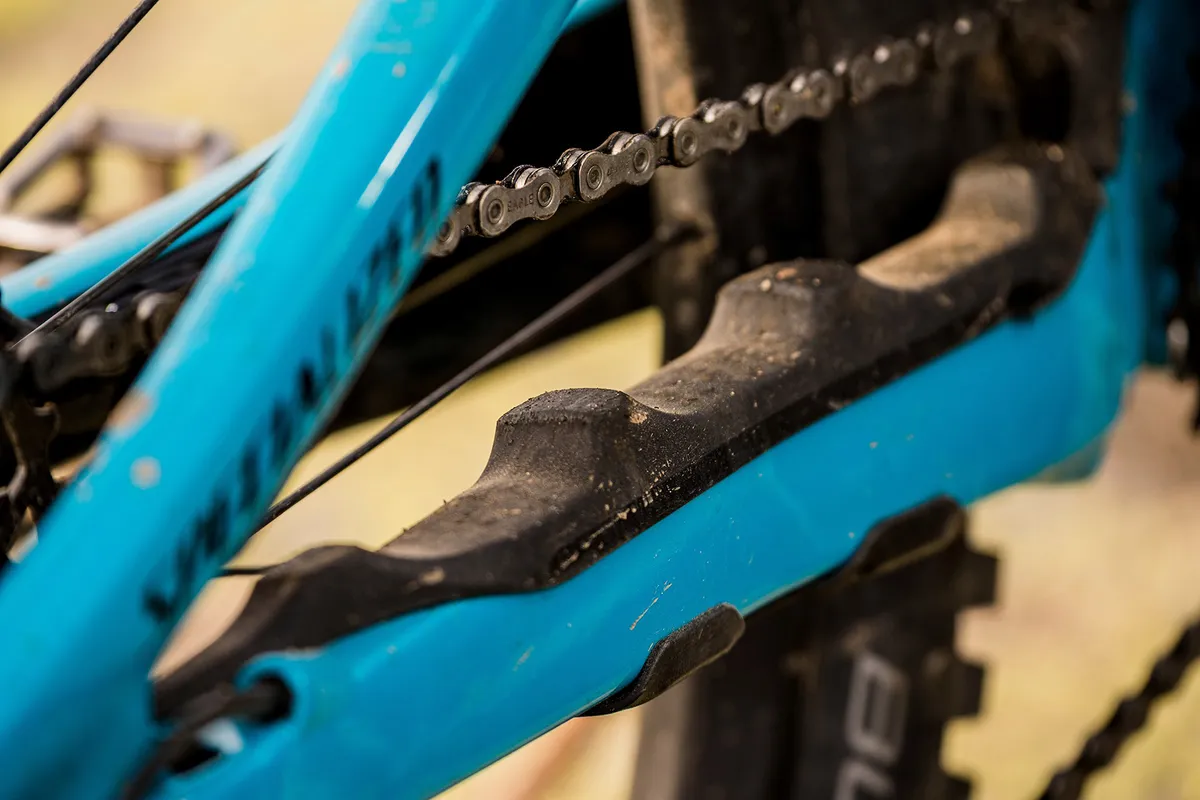
There’s a stout rubberised bumper on the belly of the bike, under the bottom bracket (BB) and lower half of the down tube, to keep the carbon properly protected from rock strikes and the like.
The chainstay features a beautifully sculpted and neatly integrated chainstay protector, which not only protects the frame from the chain bouncing around, but also helps reduce noise and calm the chain when it does start flapping.
A threaded BB (something the Enduro switched back to from press fit units back in 2017) should make maintenance easier when work does need doing, while the tidy internal cable routing goes some way in helping the Enduro to be one of the cleanest, best looking bikes on the market.
On top of the SWAP door there’s a bottle cage so you should be able to ride the Enduro pack-free thanks to plenty of on-bike storage.
Enduro Comp geometry
The Enduro comes in four sizes (S2 to S5). The S3 I tested has a very generous reach of 464mm (low setting) but, because the S5’s seat tube only grows by 20mm (it’s just 440mm), I could potentially size up if I wanted even more reach.
Equally, thanks to the advent of modern long-travel dropper posts, I could also size down. The only limiting factor with sizing up is the dropper post insertion length.
The 150mm travel X-Fusion post on the Comp doesn’t sit quite far enough in the frame for me (I’m 172cm with short legs), so running it at full extension wasn’t comfortable.
Each frame size uses the same sized chainstays, which measure just over 440mm.
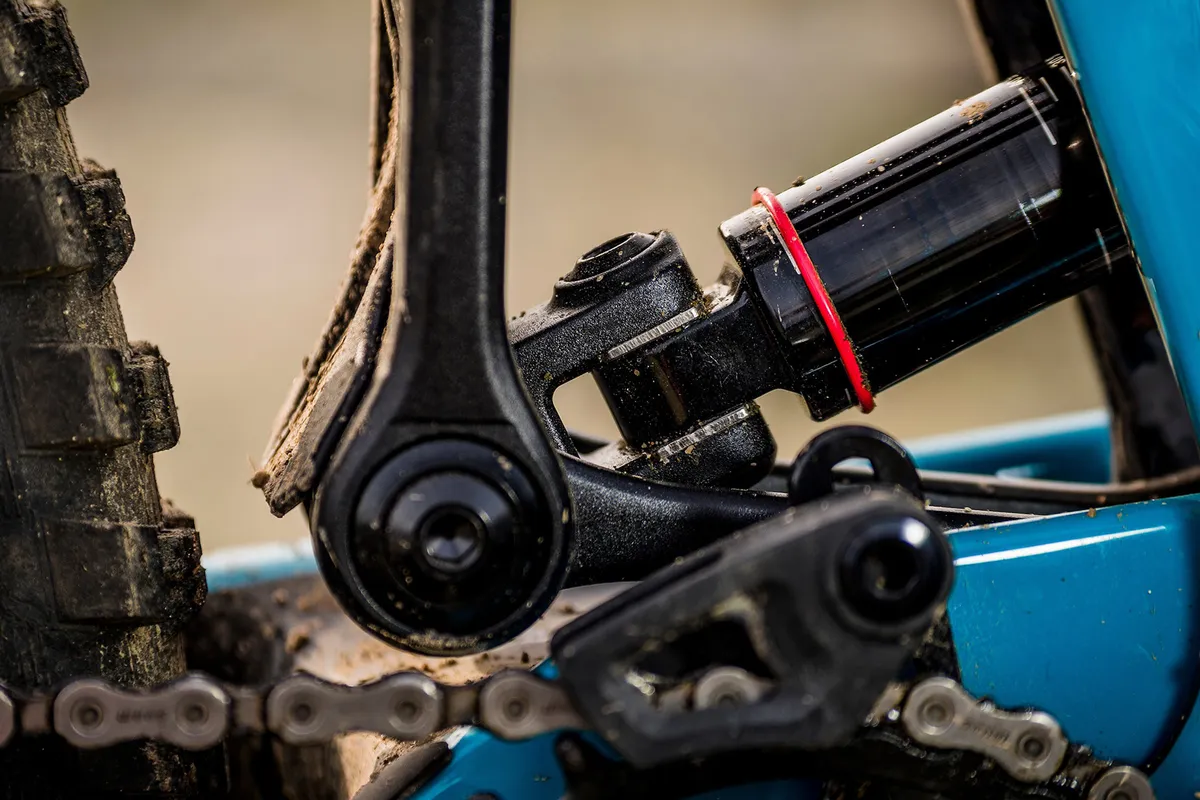
Thanks to a flip chip at the base of the lower shock mount, you can choose between a ‘High’ and ‘Low’ setting.
Switching the chip around alters the bottom bracket height by 7mm and slackens (or steepens) the head and seat angle by 0.4 degrees.
After some experimentation, I settled on riding in the High setting. Here, I measured the head angle at a super-slack 64.3 degrees while the bottom bracket sat 346mm off the floor.
At 76 degrees, the Enduro Comp’s seat angle is pretty steep compared to much of the competition, though I think it could be made fractionally steeper still.
- Seat angle: 76 degrees
- Head angle: (high setting) 64.3 degrees
- Seat tube length: 42cm / 16.54in
- Top tube (effective): 61.9cm / 24.37in
- Reach: (low setting) 46.4cm / 18.27in
- Chainstay: 44cm / 17.32in
- Wheelbase: 1,246mm / 49.02in
- Bottom bracket height: 34.6cm / 13.62in
- Head tube length: 10cm / 3.94in
- Stack: 62cm / 24.41in
- Reach: (low setting) 46.4cm / 18.27in
Enduro Comp specifications
That flashy carbon frame obviously costs a lot of cash, considering the asking price and a spec list that certainly isn’t the best. Don’t get me wrong, it’s still well-considered and Specialized has done a good job at spending money on the most important bits, but there’s certainly some okay rather than great bits in places.
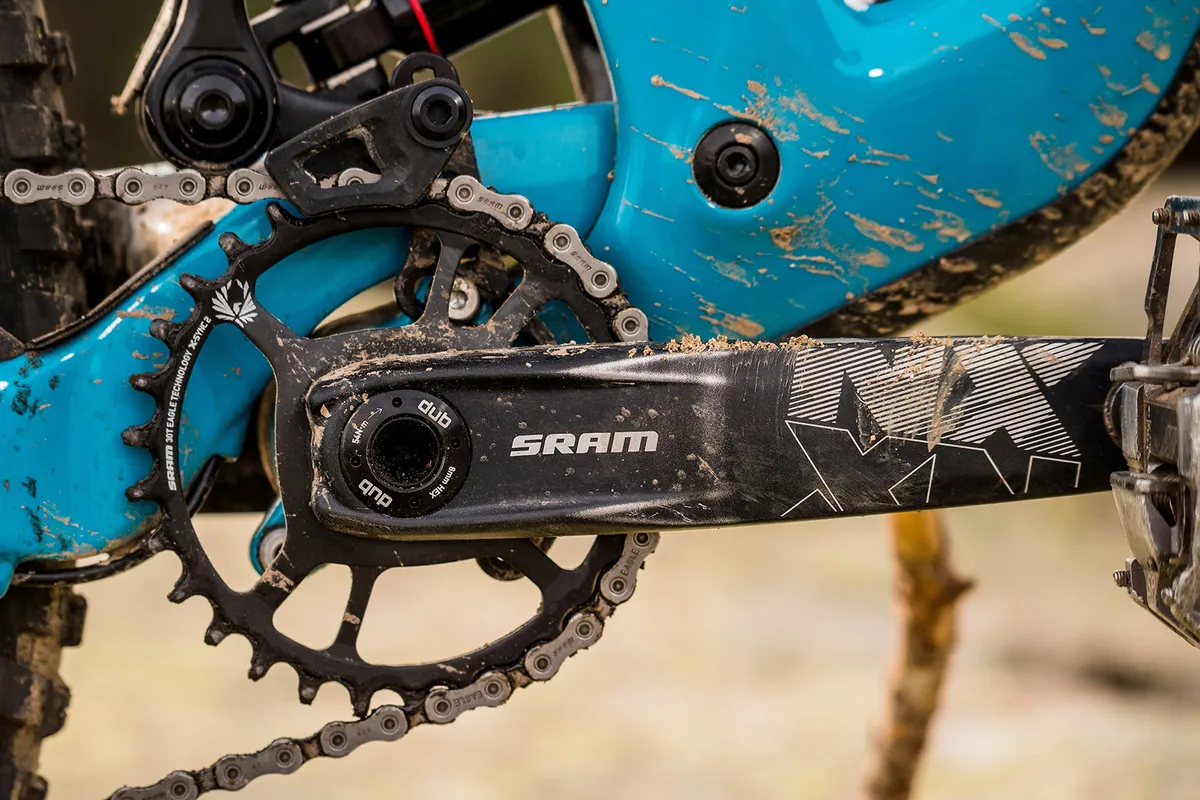
SRAM’s NX Eagle 1x12 gearing is a little disappointing at this price. It works well enough for the most part, but doesn’t feel quite as slick as the pricier GX equivalent, and not a patch on Shimano’s bargain SLX 12-speed transmission.
It also means you get the heavier, marginally narrower range 11-50t cassette over the 10-50t found on pricier drivetrains.
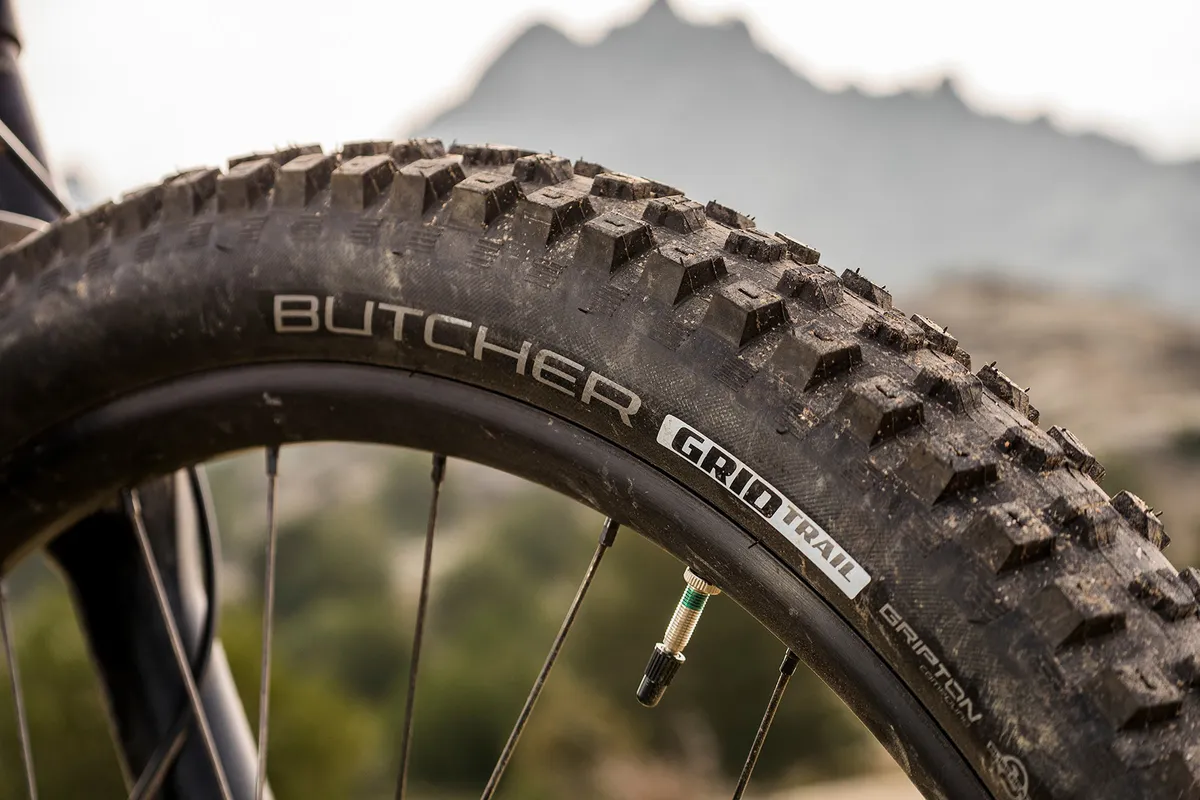
The own brand Butcher GRID Trail tyres work okay in soft muddy conditions but don’t offer the same level of grip or predictability compared to the likes of Maxxis' Minion DHR II 3C MaxxGrip tyres.
The casing is quite flimsy too, and they don’t come set up tubeless – something it seems more and more brands are now doing as standard. As a result, they struggle to handle the types of trails and speeds that the Enduro excels at, which is a shame.
It’s not all doom and gloom though, this bike didn’t get a near perfect score for nothing, after all.
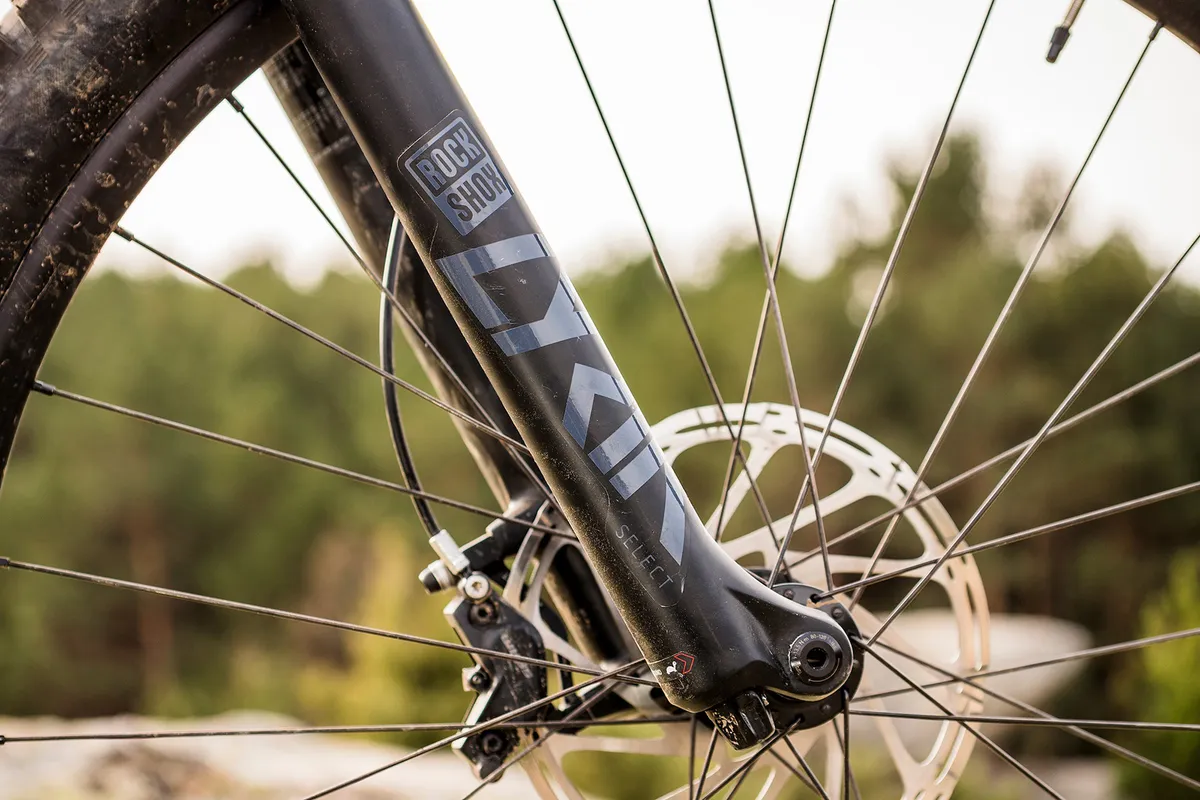
The 170mm travel, short offset (42mm) RockShox Lyrik Select fork up front and Super Deluxe+ Select shock at the rear are both properly solid performers. They’re easy to set up and tune and can more than handle their fair share of abuse.
I'm also a big fan of the SRAM Code R brakes, which are mightily powerful and offer plenty of bite, even in the wet.
X-Fusion’s Manic post is also worth a mention as another great addition to the Enduro Comp. It’s a smooth operator with nicely shaped remote lever and light-to-the-touch operation.
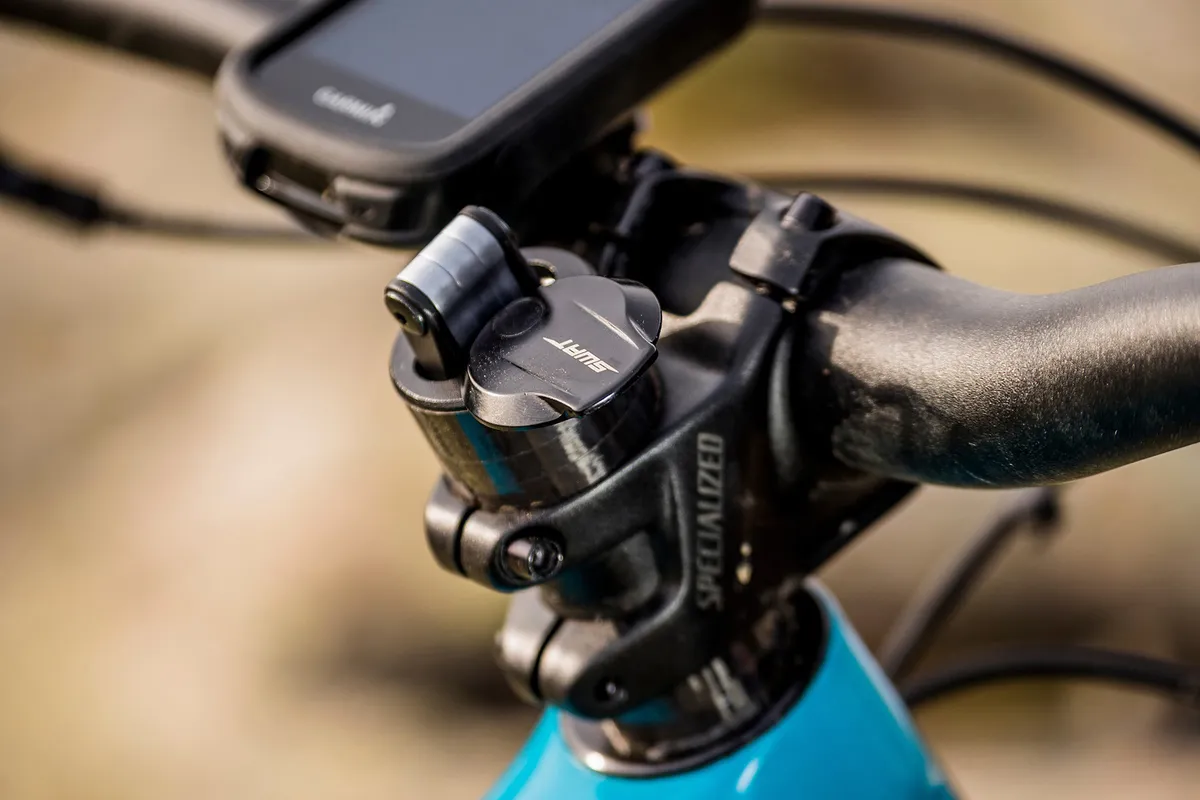
Finally, I’ve got to sing the SWAT Conceal tool’s praises. This little multi-tool sits under the fork steerer cap and is spring loaded, so once you pivot the steerer cap out of the way, the tool pops up for easy access.
It may be small, but it’s bloody useful.
Specialized Enduro Comp ride impressions
I rode the Enduro comp on a variety of trails ranging from fast, jump riddled bike-park style tracks through to steeper, more technical root and rock-riddled natural off-piste trails.
These included matted root spreads, chunky steep rock chutes, high-load high-speed turns, mellower undulating sections, along with jumps, berms and a healthy dose of rock gardens, too.
Specialized Enduro Comp climbing performance
Considering how much travel is on tap here, the Enduro will winch its way up just about anything without any real drama.
Sit in and spin a gear and the back end remains relatively well composed with little in the way of bob from the back end.
It helps that the stretched out 619mm effective top-tube means things feel relatively roomy. On steeper pitches, it also meant I had no issues with the front wheel lifting either.
The steep 76-degree seat angle helps to keep things feeling efficient too, but it could be marginally steeper if I was being really picky. It’s far from a deal breaker, though.
Specialized Enduro Comp descending performance
The Enduro Comp’s lengthy reach and 440mm chainstays help to create a great rider position from which to attack the trail on. It’s confident and roomy, but still retains enough nimbleness and isn’t unwieldy in any way when you do want to start throwing the bike around.
Couple that ride position with the superbly active, well-delivered 170mm of rear wheel travel and it’s clear that this bike will shine brightest on the rowdiest of trails.
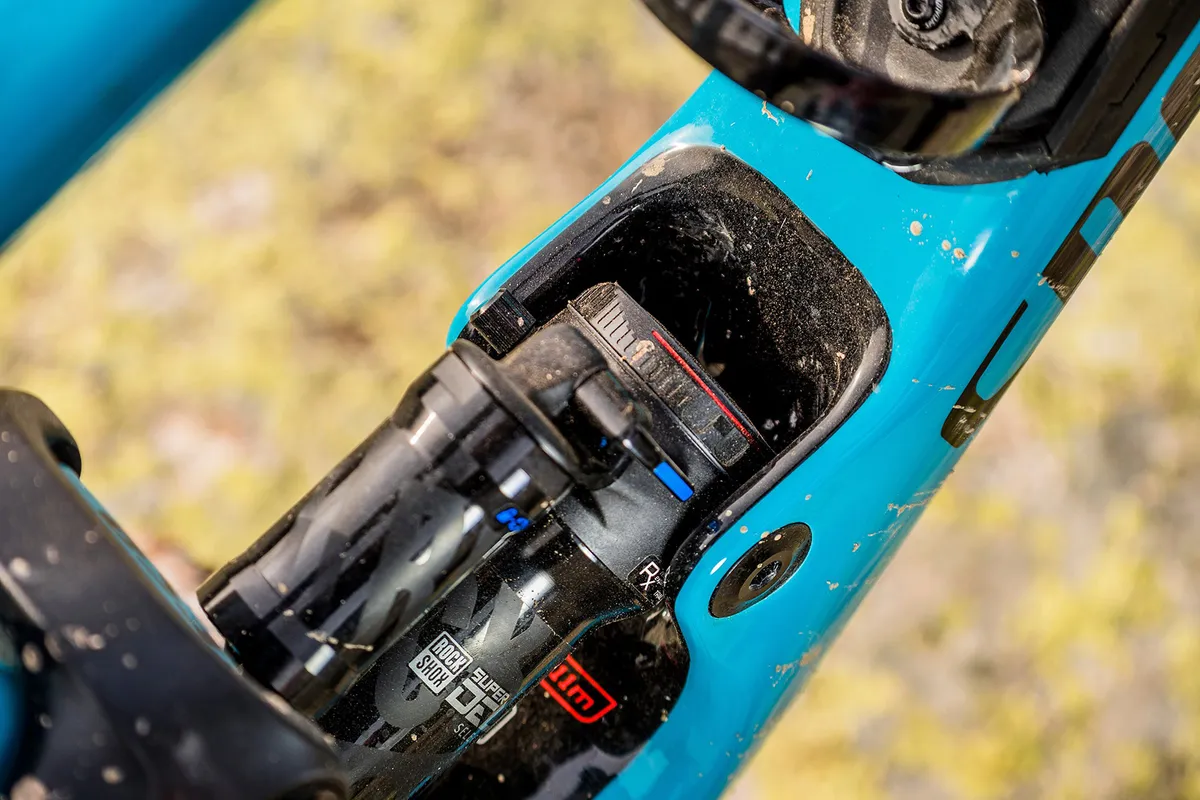
On really chunky stuff, the Enduro is arguably the ultimate when it comes to calming the chaos and tackling the rowdiest of lines with a composure you’ll only likely emulate on a downhill bike.
Its ability to balance traction and support while ironing out roughed up, square edges, and allowing you to take the most ludicrous lines, is incredible.
When it comes to outright downhill confidence, no other similarly intended bike can touch the Enduro. There is some feedback from the bike, but it does a great job of isolating the rider from the heaviest hits when you do just drop your heels and plough into the unknown.
It’s not without its faults, though. Ride something that’s a little more sedate and the Enduro’s ground hugging capabilities do mean you really have to work the bike hard when pumping through undulations in the trail in a bid to gain speed.
Swapping it into the High setting does add some urgency and pop though, especially when slicing through linked turns. Unlike the S-Works model, which uses a Fox X2 shock with adjustable low-speed compression damping, the Comp’s level of support can’t be tweaked to quite the same extent, so dialling in support isn’t quite as easy.
However, get the balance right with spring pressures and you’ll be rewarded with ridiculous levels of confidence.
Despite the bottom bracket height looking a touch too tall on paper, it never bothered me on the trail. The low-slung centre of mass and supple, super-smooth suspension action lets you carve an unsupported inside line or slice across a root-riddled camber with reckless abandon.
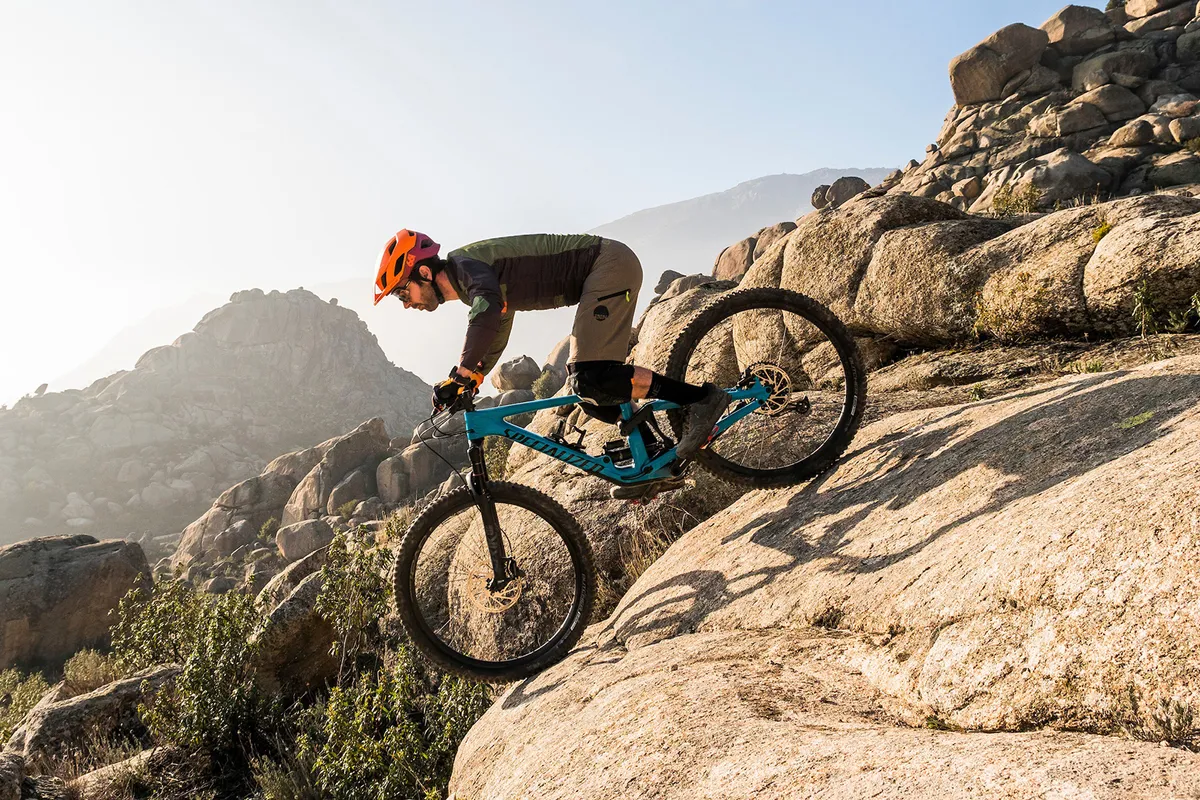
While I must give a hat tip to the Lyrik fork, Super Deluxe+ shock and Guide R brakes, which offer plenty of power and control, it’s hard to not be a little disappointed with the rest of the spec at this price.
Upgrading the drivetrain isn’t a cheap option and the NX system the Comp comes with will work just fine. However, at a minimum, I'd suggest converting the tyres to a fully tubeless set up, if not replacing them for something a little tougher.
As it stands, the bike can be ridden at ludicrous speeds but you’ll be wincing each and every time the tyres slap into anything remotely sharp.
Enduro Comp bottom line
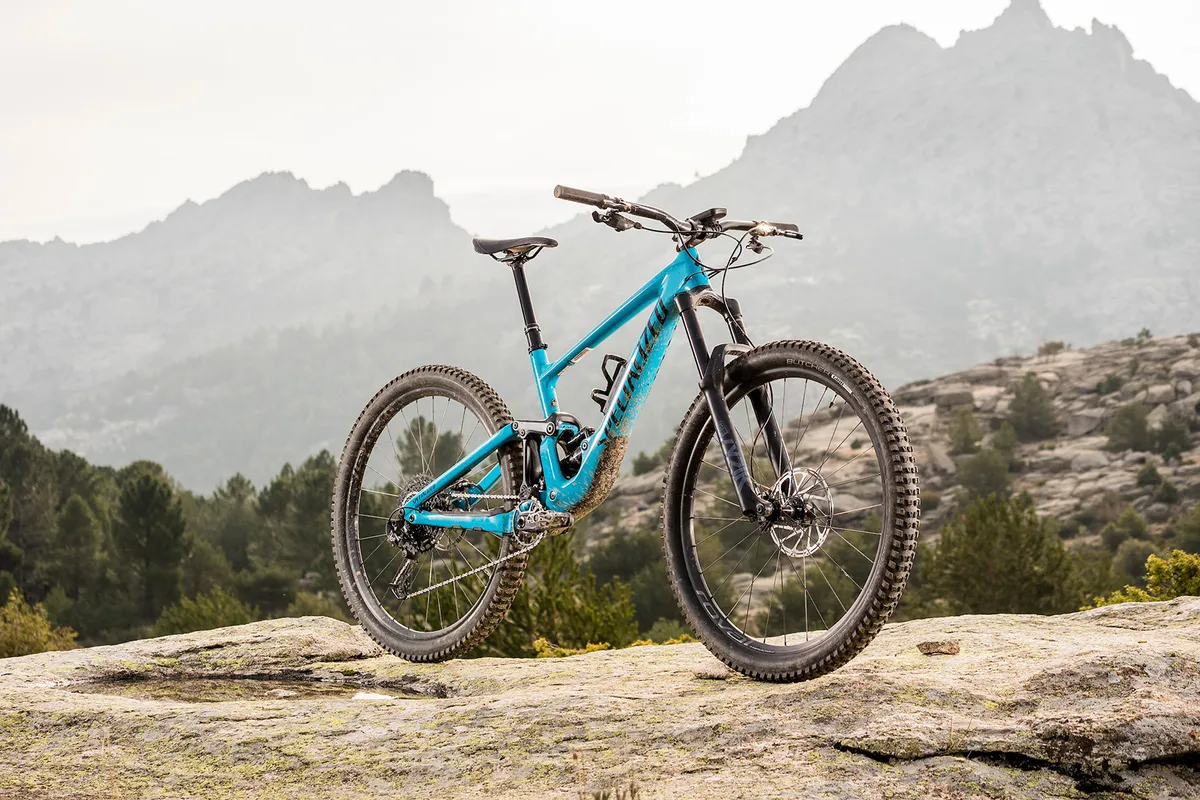
The Enduro Comp is one of the closest to a full-on downhill rig of any enduro-style bike that I’ve ever ridden.
Point it down something hideously rough and rowdy and you can rest assured that it’ll handle it with ease.
It does need gravity on its side to truly shine, however, and it’s a shame the spec isn’t quite as competent as the frame.
